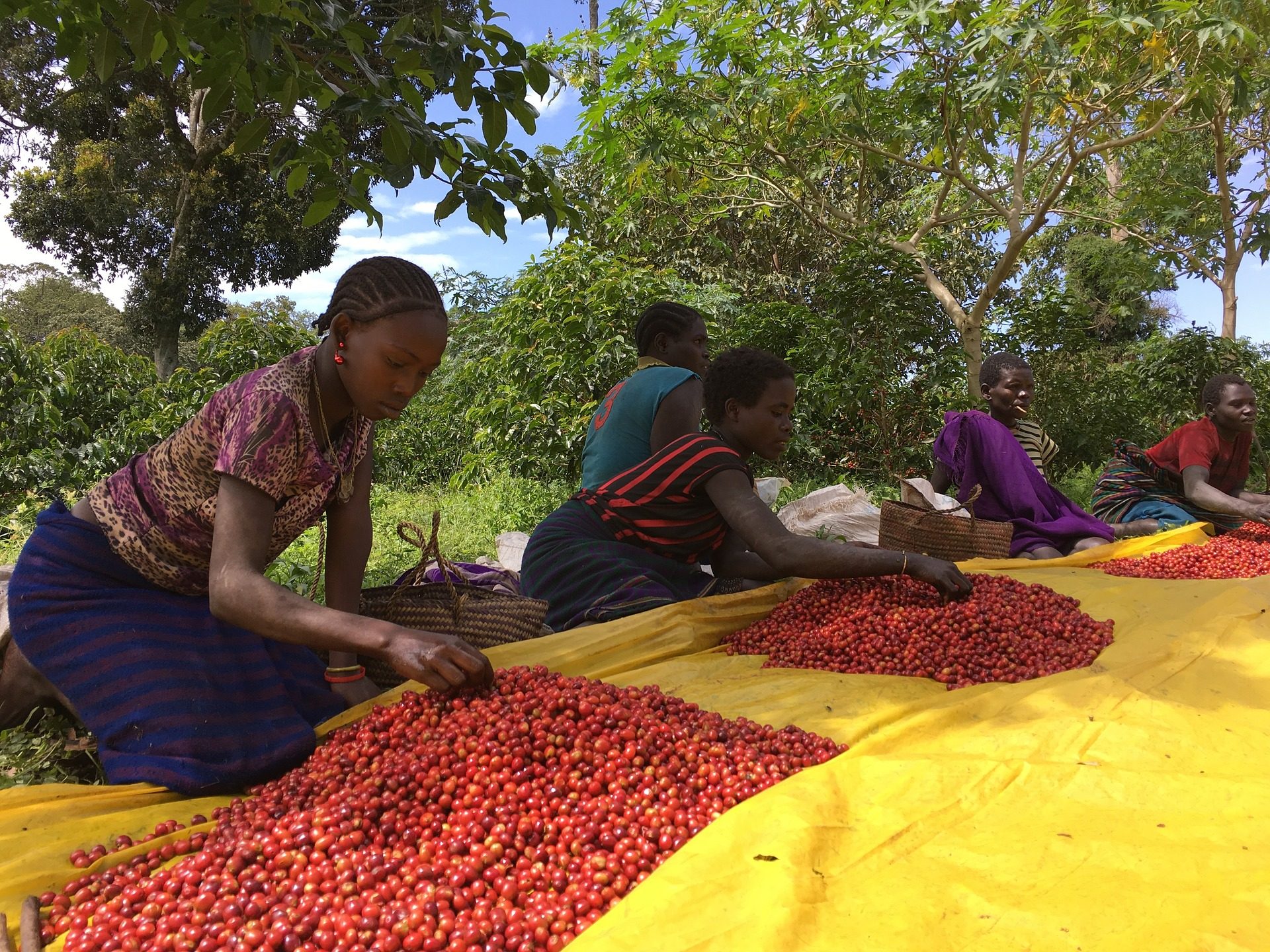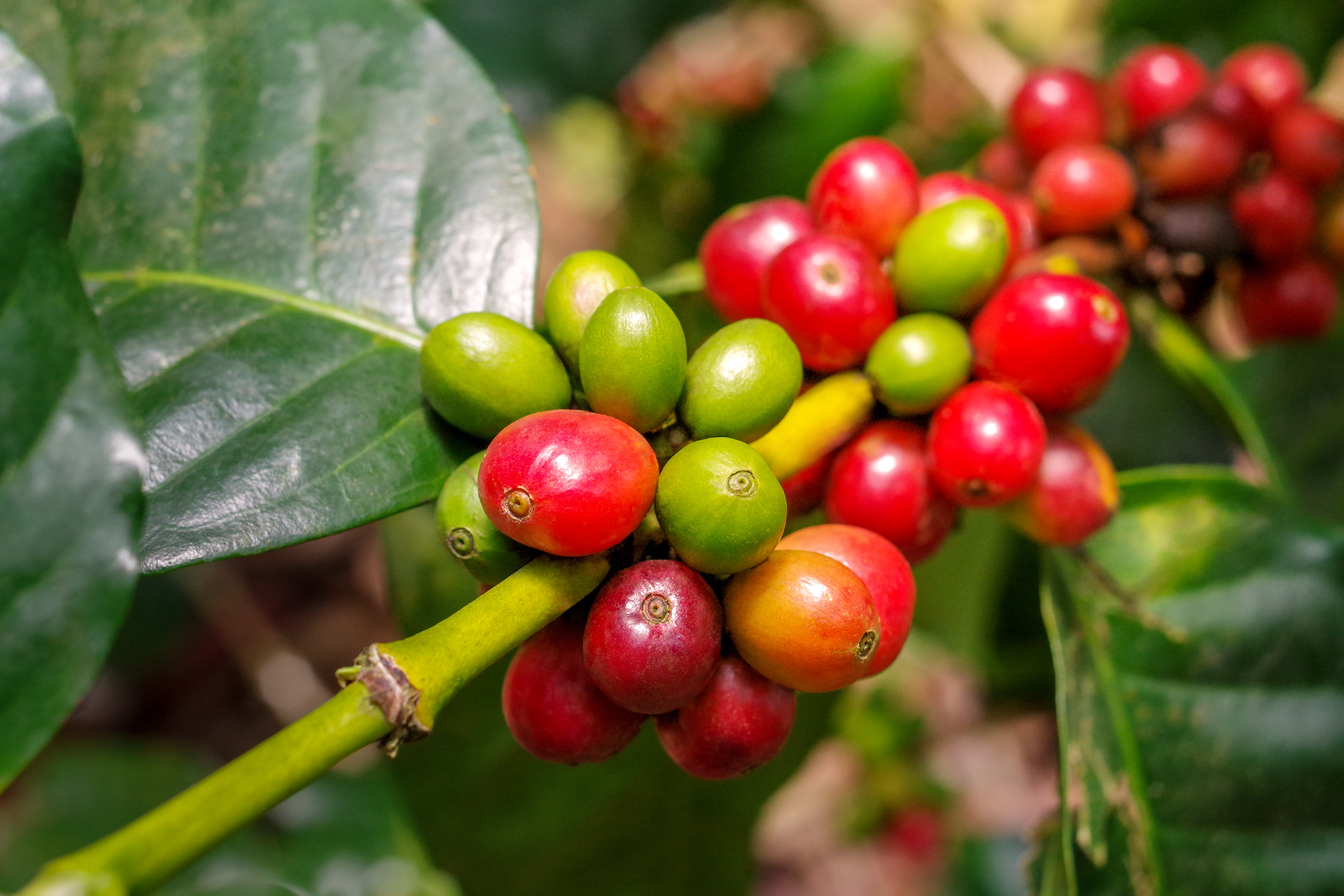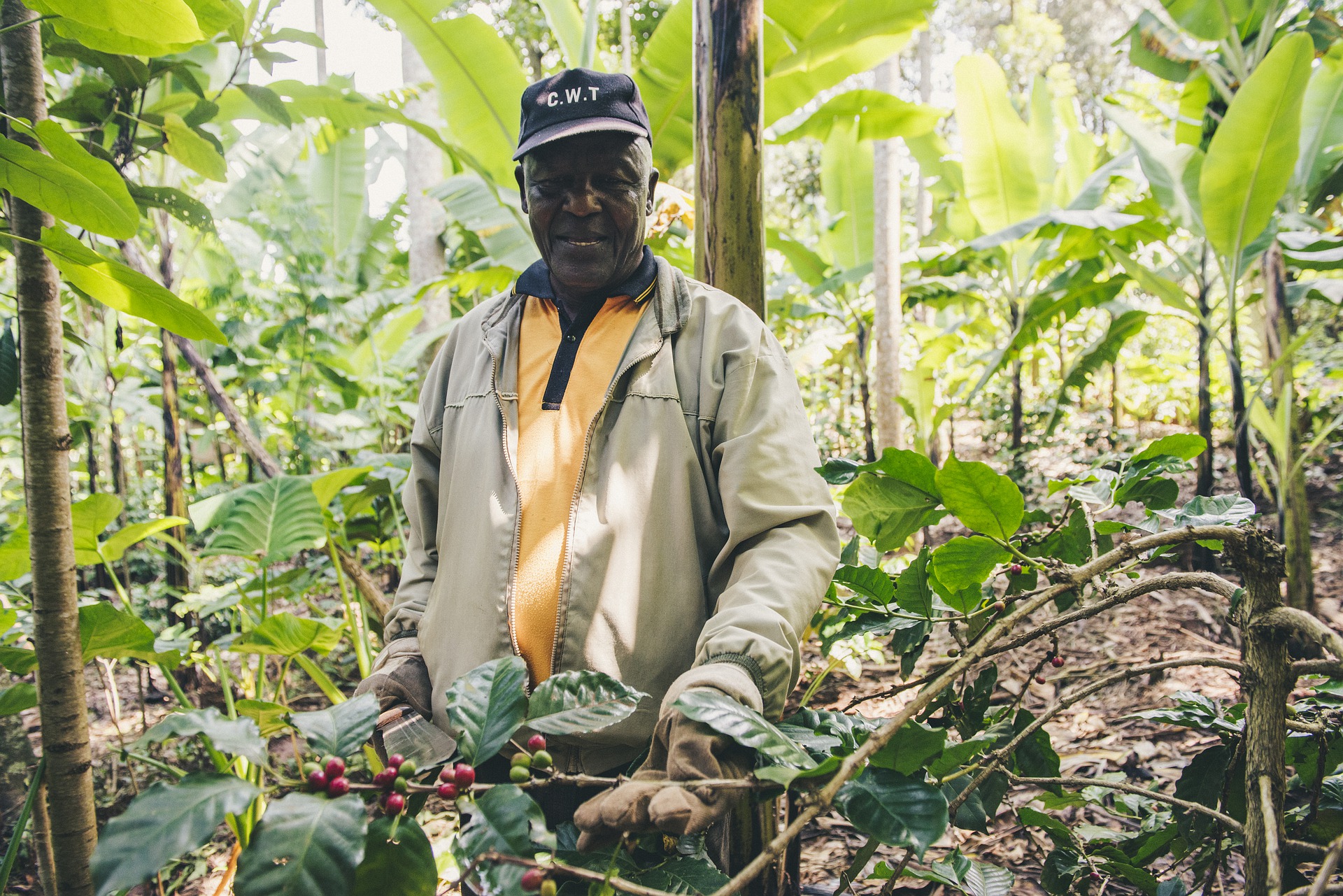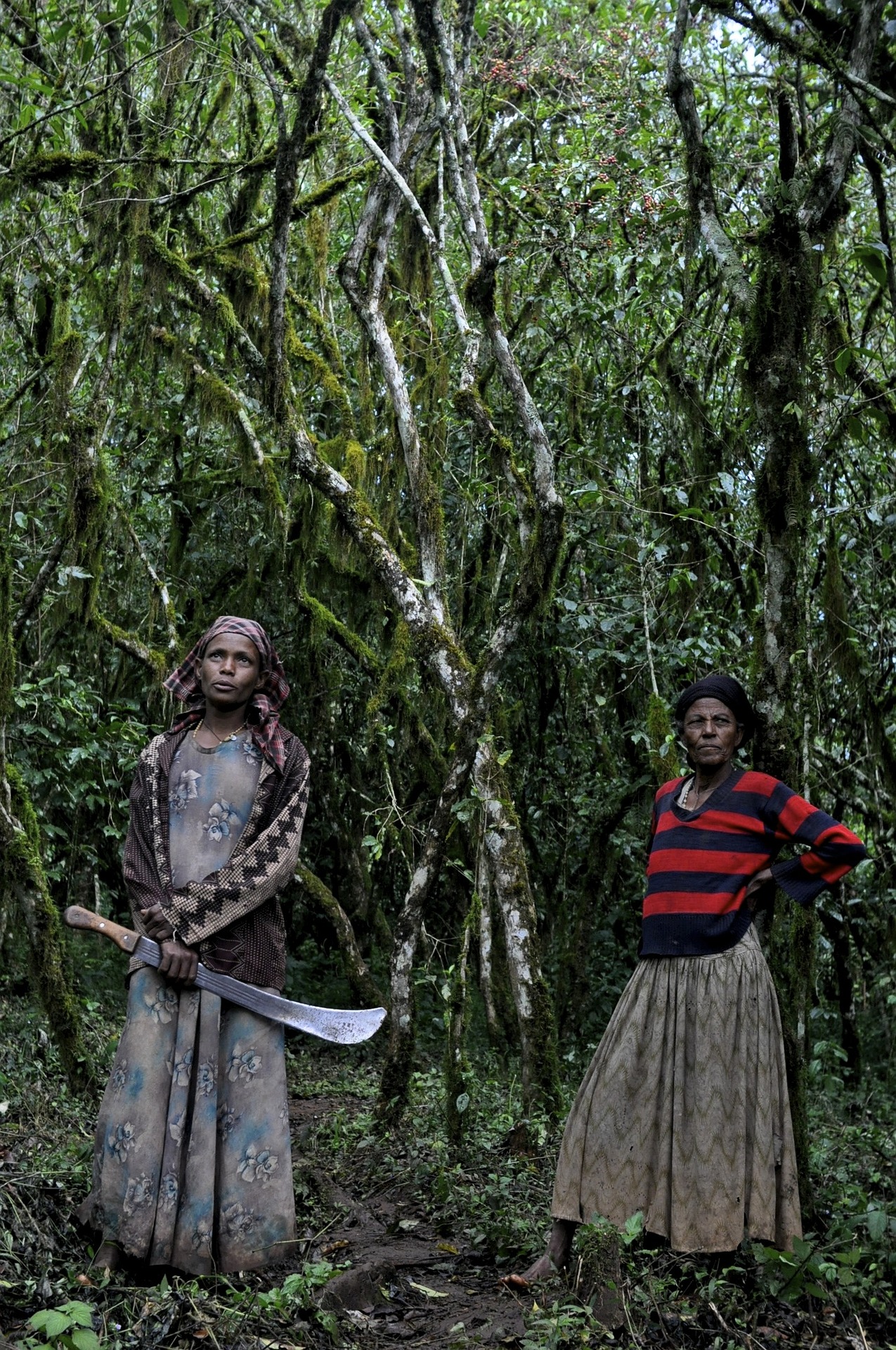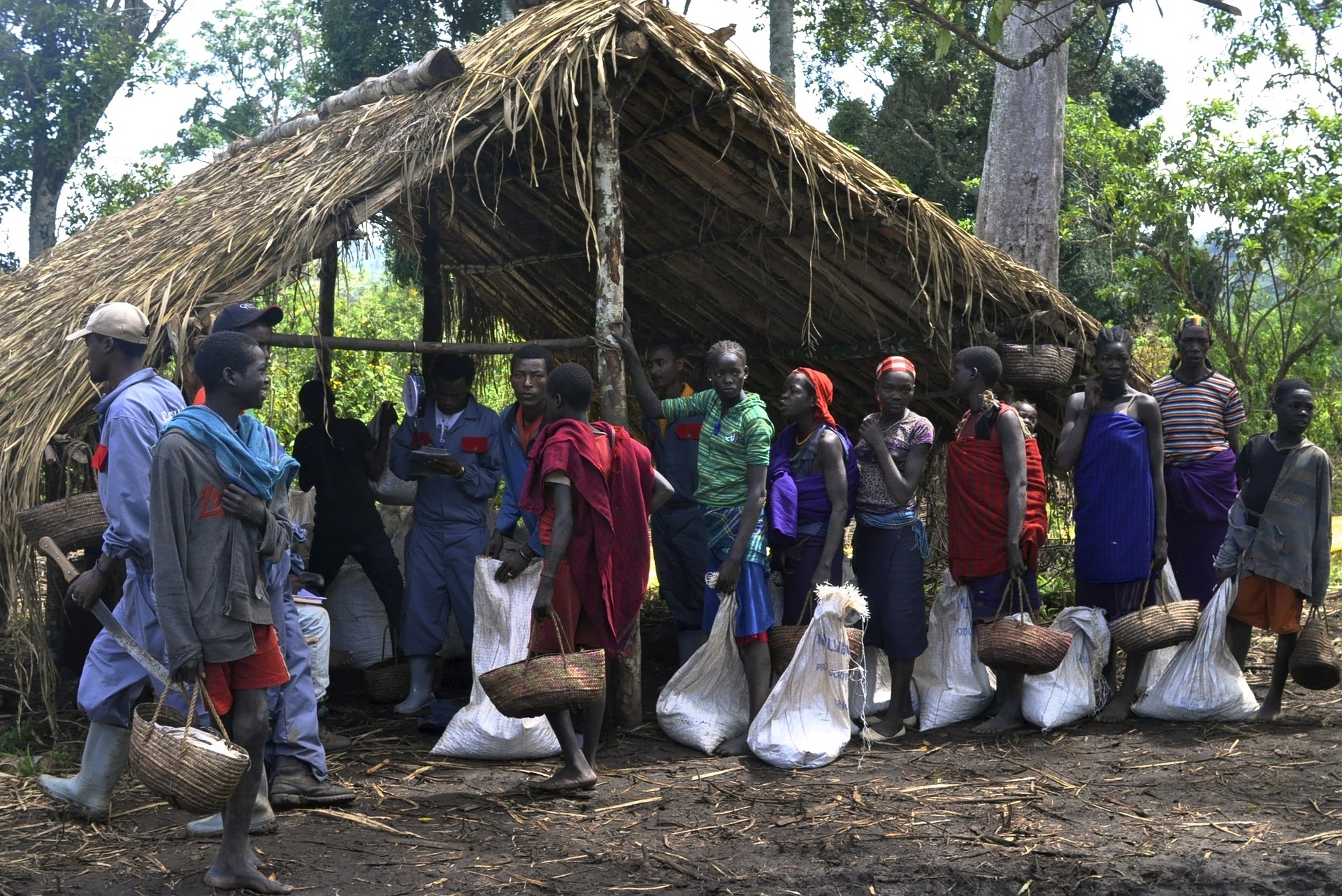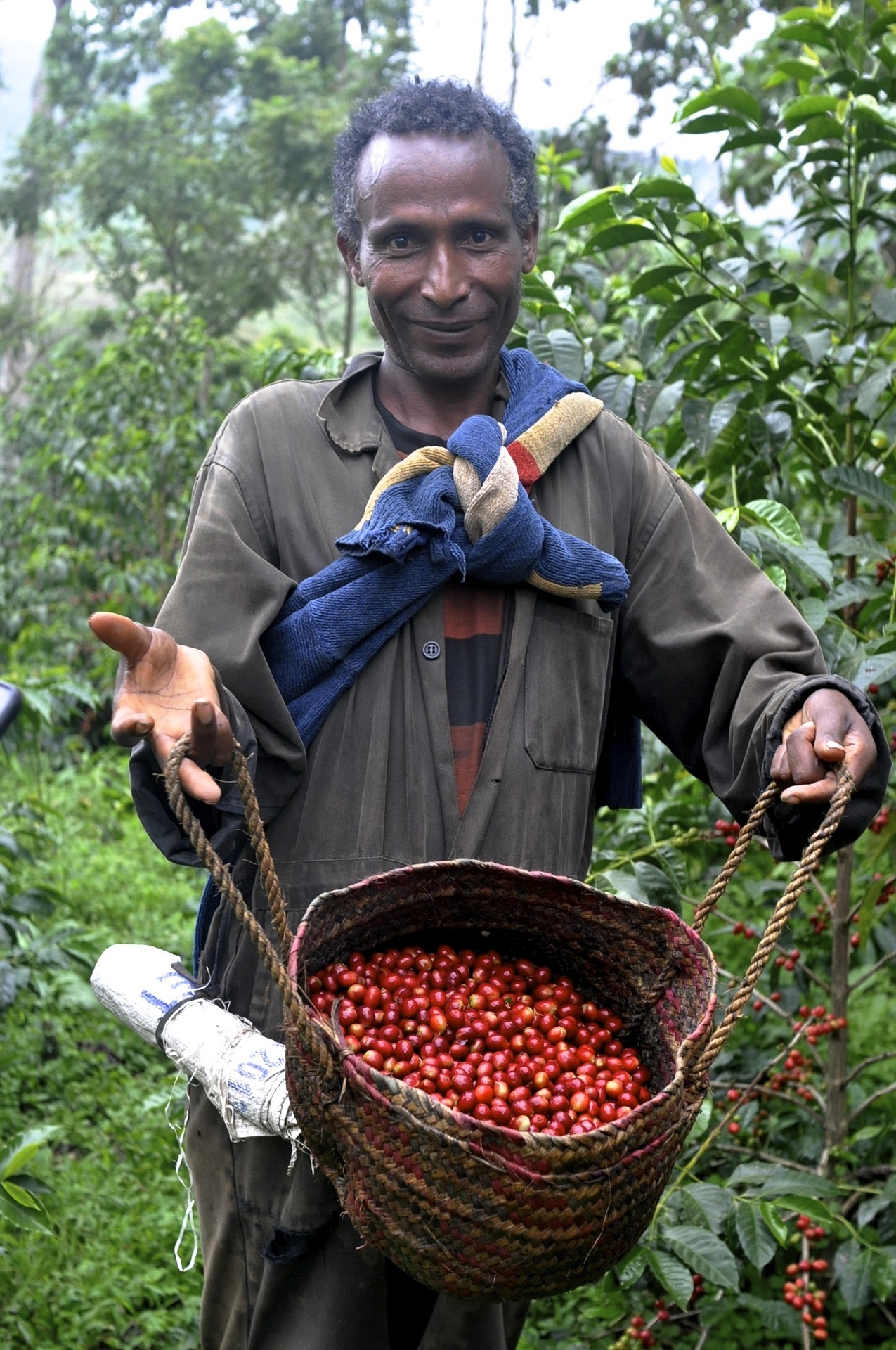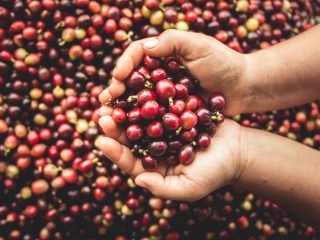The country considered the birthplace of coffee deserves at least a thick volume, but even a blog post can be a challenge. When writing about Ethiopian coffee, you don’t quite know where to begin. Almost every aspect of coffee production in this country is exceptional, just like the flavour of coffees sourced from there.
First, let us give you a few basic facts about the history and economy of the coffee sector.
History
This is where humans are said to have discovered coffee in the 9th century. The legend has it that goats and a goat herder named Kaldi were part of the story. One day, the goat herder saw that his goats were very excited after eating red fruit growing on nearby shrubs. Intrigued, he brought the fruit to a local shaman who, convinced of their diabolical powers, ordered to have them burnt. Sizzling coffee cherries started to give off a wonderful aroma, which made the shaman change his mind. When the fire was put out, the burnt coffee cherries were taken out and poured over with hot water for the sake of preservation. Then it turned out how wonderful a brew made this way is. Shamans and other priests soon started using coffee as a means of stimulation on night vigils or during prayers.
Regardless of whether the story is true or not, Ethiopia is widely considered the cradle of coffee, which from there spread to all parts of the world.
Economy
The country experiences many difficulties: political and economic ones, as well as droughts. Over the past years, Ethiopia has developed quickly and coffee has played a significant role in this process.
Ethiopia is ranked fifth worldwide when it comes to the quantity of coffee produced with 7,500,000 60kg bags of coffee in 2018. The leading countries are: Brazil (60 million), Vietnam (30m), Columbia (14m) and Indonesia (10m). Interestingly, this country has a high internal consumption rate, corresponding to around a half of its total production and amounting to 2.26kg per capita (in 2016).
Amongst 105 million Ethiopians, over 15m are employed in the coffee sector, and coffee makes for 35% of the total export and generates around 60% of the revenue coming from abroad.
Coffee production
Coffee plants grow mainly in the south-western part of the country, and the most famous regions are: Yirgacheffe, Sidamo, Kaffa, Harrar, Djimmah or Limu. The only coffee species grown in Ethiopia is Arabica. Growing altitudes usually greatly exceed 1,000 meters above sea level, but when it comes to speciality quality coffees, they are grown mainly at elevations of 1,700m to even 2,200m a.s.l. The coffee tree grows in shade, coffee is hand-picked, and the process involves very little mechanisation. This is just opposite to how coffee production looks in, for example, Brazil, but these traditional practices come at the expense of a much lower yield per hectare compared to the world’s largest coffee producer.
It can be dry/natural processed, as well as fully washed/wet processed. Depending on region, there will be a different processing method prevailing. Drying usually takes place on African beds, concrete patios or, when it comes to lower quality coffee, simply on the ground.
The classification is divided into so-called grades, or thresholds, and is laid down by national law based on a number of defects allowed in a sample.
| Grade | Number of defects |
| 1 | 0-3 |
| 2 | 4-12 |
| 3 | 13-25 |
| 4 | 26-45 |
| 5 | 46-100 |
| 6 | 101-153 |
Speciality quality coffees should fall under the grade 1 or 2 category. Grades 3 to 6 describe commercial coffees, so those whose quality is inferior to speciality coffees. There are also grades 7 and 8, but coffees classified as such are usually sold on the domestic market and aren’t exported.
Trade and export are done in various ways. Until recently, they were controlled entirely by the national authorities, and all coffee was evaluated and sold through an auction system in Addis Abeba, known as the Ethiopian Commodity Exchange (ECX). It was virtually impossible to purchase coffee from a producer in line with the free market rules. Right now the situation has changed and it is much easier to trade in raw coffee.
Ethiopia, like some other African countries, is famous for its system of cooperatives. Due to a high fragmentation, every farmer has only a small parcel of land where they grow coffee trees. All crops are bought in, processed and sold by the cooperatives. Which is why when buying coffee from this country, it is virtually impossible to purchase a packaging produced by just one farmer, because the cooperatives often have as many as 150 or even 200 members. All crops are combined and processed together. This is by no means the only production system in Ethiopia, as the country is experiencing drastic changes and more and more often you can buy coffees of a given botanical variety, coming from one farm.
Unique character
When describing the flavour of Ethiopian coffees, you can use the word ‘unique’ without any exaggeration. What is meant by this and where does this unique character of beans come from?
First, 90% of Ethiopian coffee is hand-picked in forests or home gardens, and just 10% of it comes from organised farming. In other words, coffee in Ethiopia still grows ‘wild’ and is picked just like blueberries or mushrooms in Poland. This production model drastically differs from all other countries producing coffee.
Ethiopian heirloom – such botanical variety description can be found on most Ethiopian coffees’ packaging, even for the best coffees. This means that you cannot really tell what is inside. Wild coffee is a mixture of dozens, if not hundreds, different varietals, which are put into one bag and cannot be separated again. Due to that, the flavour of coffee will be very interesting and exceptional, and a given coffee will be veiled in mystery, since no one will know exactly what has landed in the packaging.
Of course, the situation changes from year to year and today we can buy the beans from a so-called monoculture where just one specific varietal is grown, which often allows you to try individual endemic varietals, such as the famous Geisha. Such coffees are still a rarity, but it is worthwhile hunting for them.
When describing distinctive flavour profiles of particular regions, you should keep in mind the above-mentioned diversity – Ethiopia is a true kaleidoscope of flavours and often there can be a world of difference between two coffees coming from the same region. But we can still name a few most famous ones.
| Region | Processing Method | Flavour profile |
| Harrar | dry | fruity, creamy body, blueberry notes |
| Sidama | wet/dry | very varied, intense fruity flavour, tea-like body |
| Yirgacheffe | wet/dry | citrus acidity, medium body,
herbal notes, high sweetness, bergamot aroma |
| Jimma | dry | fruity with cocoa and tea notes |
| Limmu | wet | well-balanced with wine notes |
This is only a short compilation of Ethiopian coffees’ potential flavour profiles. A mix of environmental, social and economic factors makes coffees from this region unique and very much appreciated all over the world. A following fact can be quoted in favour of Ethiopian coffees: when in 2018 Agnieszka Rojewska won the World Barista Champion title, she treated the judges to a coffee coming precisely from Ethiopia. Can there be a better recommendation?

